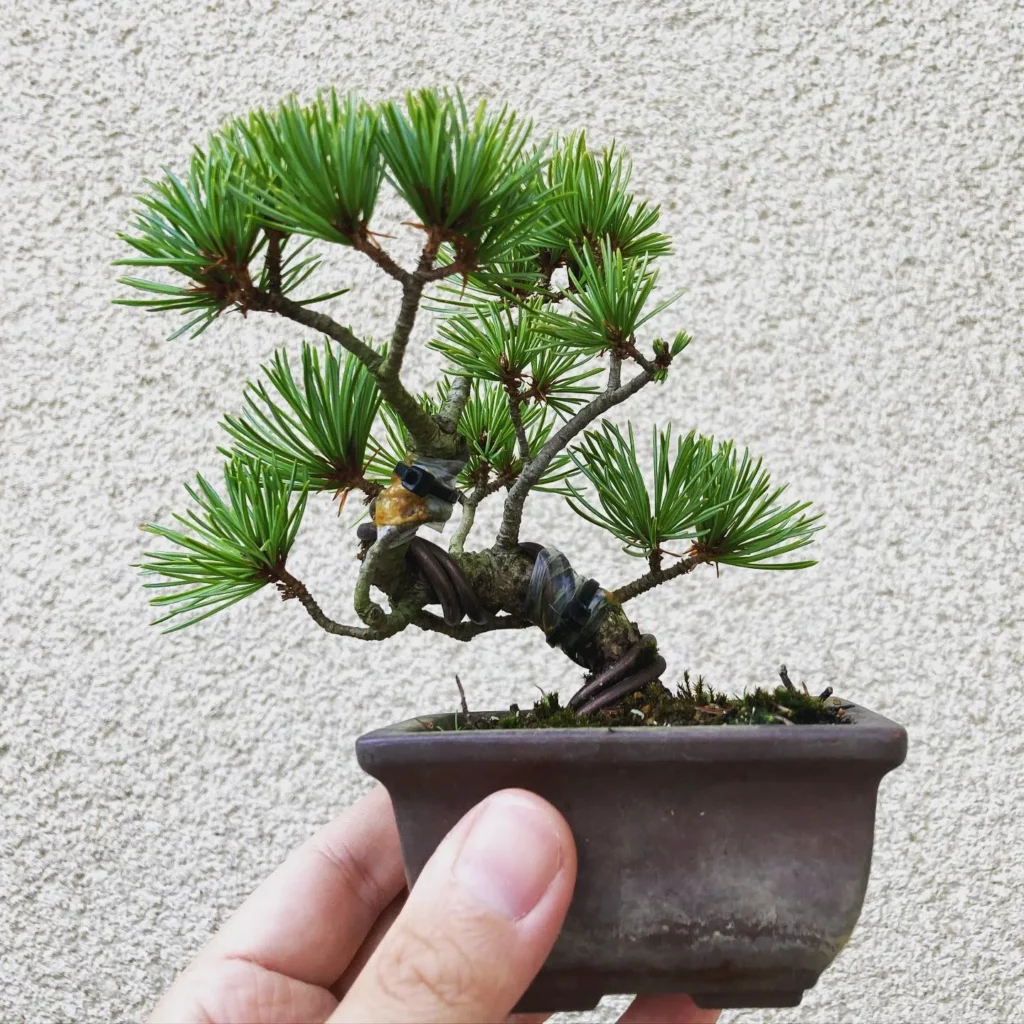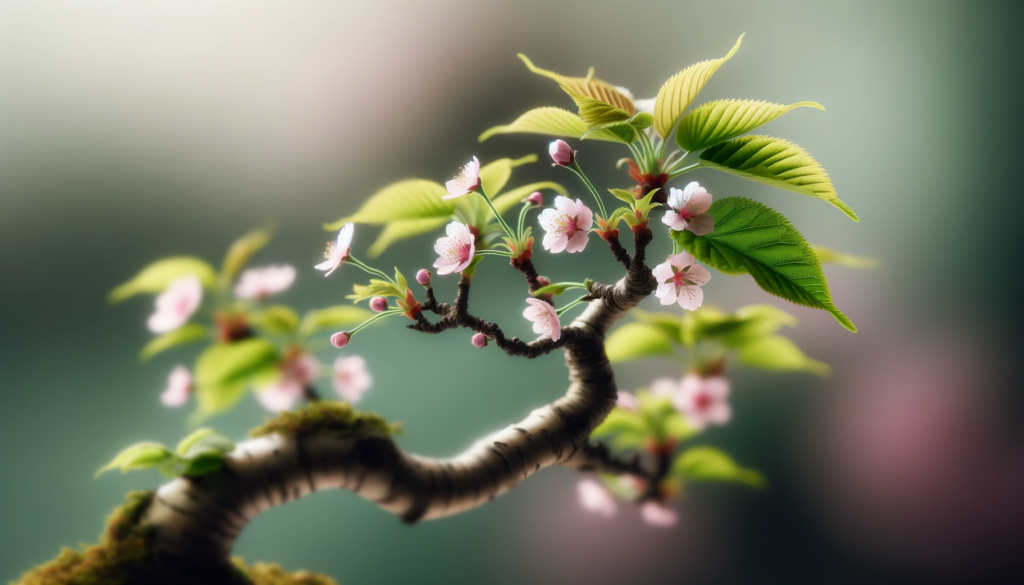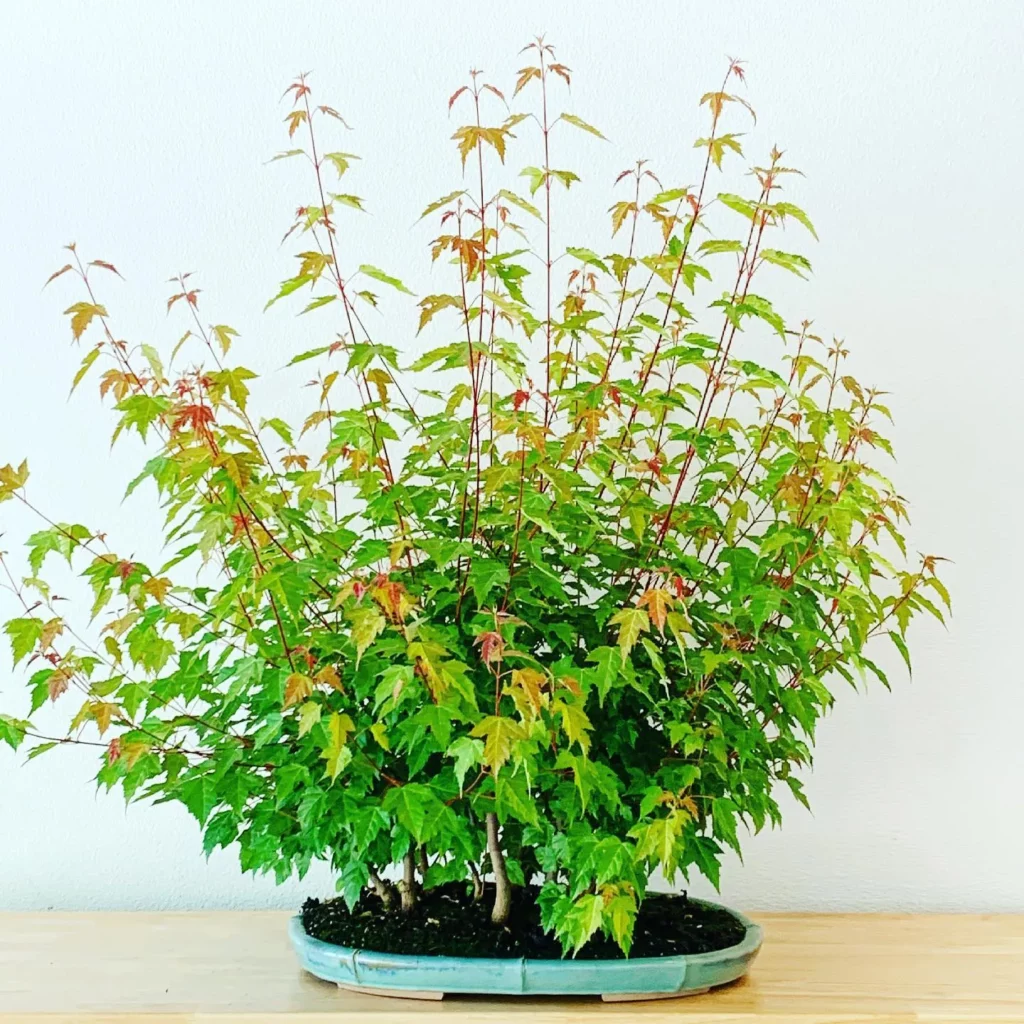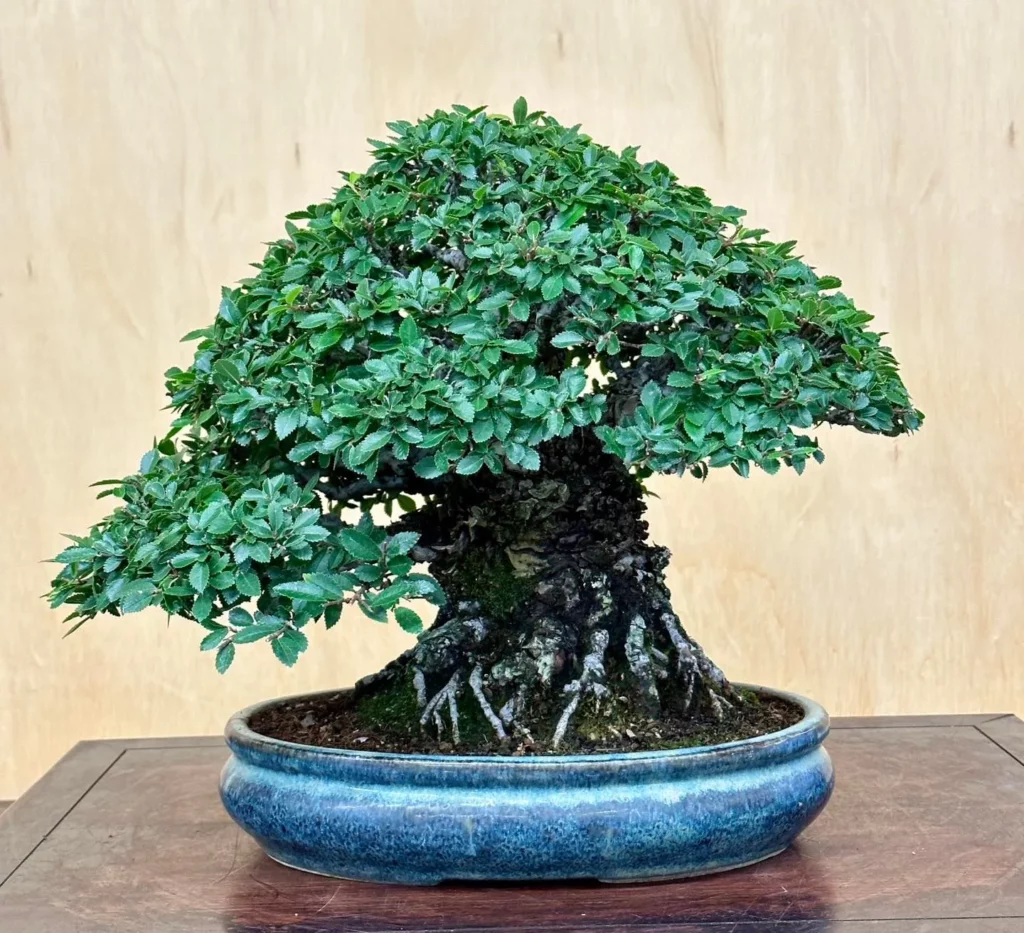Dwarf Alberta Spruce Bonsai is a visually stunning and captivating miniature tree. Its compact size and conical shape add a sense of elegance to any bonsai collection. One of the most striking features of this bonsai variety is its beautiful blue-green foliage, which creates a peaceful and tranquil ambiance. The delicate needles of the Dwarf Alberta Spruce Bonsai contribute to its unique appearance, making it a standout choice among bonsai enthusiasts.
Key Takeaways:
- Dwarf Alberta Spruce Bonsai, or Picea glauca ‘Conica’, is a popular choice among bonsai enthusiasts.
- Its compact size and conical shape make it visually appealing.
- It thrives in full sun or partial shade, requiring at least 6 hours of direct sunlight per day.
- Proper watering is essential, keeping the soil consistently moist but not waterlogged.
- Fertilize during the growing season using a balanced, slow-release bonsai fertilizer.
Appearance of Dwarf Alberta Spruce Bonsai



The branches of this bonsai tree grow horizontally, enhancing its visual appeal. This horizontal growth pattern, combined with the conical shape, creates a harmonious balance and symmetry. The striking color of the needles further sets the Dwarf Alberta Spruce Bonsai apart, making it a focal point in any bonsai display. Its appearance exudes a sense of tranquility and natural beauty, making it a popular choice among bonsai connoisseurs.
Key points:
- Compact size and conical shape
- Stunning blue-green foliage
- Delicate needles
- Horizontal branch growth
- Striking color
Light Requirements for Dwarf Alberta Spruce Bonsai



Proper light exposure is essential for the healthy growth and development of your Dwarf Alberta Spruce Bonsai. This bonsai tree thrives in full sun or partial shade, so it’s important to find the right balance. Ideally, your bonsai should be placed in a location that receives at least 6 hours of direct sunlight per day. This will ensure that it gets enough light to flourish.
However, it’s important to note that during hot summer months, some protection from the intense afternoon sun may be necessary. This can be achieved by providing shade or moving the bonsai to a slightly shadier spot. By doing so, you’ll prevent the delicate foliage from getting scorched and maintain the overall health and beauty of your Dwarf Alberta Spruce Bonsai.
Key Points:
- Dwarf Alberta Spruce Bonsai thrives in full sun or partial shade.
- It should receive at least 6 hours of direct sunlight per day.
- Provide some shade in hot summer months to prevent foliage from getting burnt.
Watering the Dwarf Alberta Spruce Bonsai



Proper watering is essential for the health and vitality of your Dwarf Alberta Spruce Bonsai. It’s important to strike a balance between keeping the soil consistently moist and avoiding waterlogging. To determine when to water your bonsai, simply touch the topsoil with your fingertips. If it feels slightly dry, then it’s time to water.
During hot summer months, your bonsai may require more frequent watering to prevent drying out. However, it’s crucial to avoid overwatering, as this can lead to root rot and other issues. Ensure that any excess water drains out of the pot to prevent waterlogging and maintain proper soil moisture levels.
As a general rule, it’s better to water your Dwarf Alberta Spruce Bonsai thoroughly but less frequently than to provide small amounts of water more often. This encourages deep root growth and helps your bonsai develop a strong and resilient root system.
Here are some watering tips for your Dwarf Alberta Spruce Bonsai:
- Water your bonsai thoroughly until the water runs out of the drainage holes at the bottom of the pot.
- Allow the soil to dry slightly between watering to prevent overwatering.
- Use a watering can or a soft spray nozzle to avoid disturbing the soil and roots.
- Avoid watering the foliage directly, as this can lead to fungal diseases.
- Consider using a moisture meter to accurately assess the moisture level of the soil.
Fertilizing the Dwarf Alberta Spruce Bonsai



Proper fertilizing is essential for the health and vitality of your Dwarf Alberta Spruce Bonsai. By providing the right nutrients, you can promote lush foliage and strong root development. Here are some key points to consider when fertilizing your bonsai tree:
1. Choose a balanced, slow-release fertilizer
It is recommended to use a balanced, slow-release fertilizer specifically formulated for bonsai trees. These fertilizers release nutrients gradually over time, ensuring a steady supply of essential elements for your Dwarf Alberta Spruce Bonsai.
2. Fertilize during the growing season
It is best to fertilize your bonsai tree during the active growing season, which typically starts in spring and extends until early fall. This is when the tree is actively taking up nutrients and is in need of additional nourishment.
3. Follow the instructions for dosage and frequency
Always follow the instructions on the fertilizer package for the proper dosage and frequency of application. Applying too much fertilizer can lead to nutrient burn, which can damage the roots and foliage of your bonsai tree. Be sure to measure and apply the fertilizer accurately.
4. Avoid fertilizing during dormancy
During the winter dormancy period, when your Dwarf Alberta Spruce Bonsai is not actively growing, it is best to refrain from fertilizing. The tree’s nutrient requirements are minimal during this time, and applying fertilizer can disrupt its natural resting phase.
Potting the Dwarf Alberta Spruce Bonsai
Proper potting is essential for the health and growth of your Dwarf Alberta Spruce Bonsai. Here are some key considerations:
- Repotting: It is recommended to repot your bonsai tree every 2-3 years. This helps prevent root bound and allows for fresh soil and nutrients. Spring is the best time to repot, just before the tree enters its growing season.
- Soil mix: Use a well-draining bonsai soil mix for potting your Dwarf Alberta Spruce Bonsai. A mix of organic and inorganic components, such as akadama, pumice, and lava rock, will provide adequate drainage while retaining moisture.
- Root pruning: When repotting, gently remove the bonsai tree from its current pot and trim excess roots. This encourages new root growth and prevents overcrowding in the pot. Be careful not to remove too many roots, as this can stress the tree.
- Choosing the right pot: Select a pot that is slightly larger than the current one, allowing room for growth. Bonsai pots are typically shallow and have drainage holes to prevent waterlogged soil. Ceramic or clay pots are popular choices, as they provide stability and good airflow.
- Potting process: Place a layer of soil mix at the bottom of the new pot and position the bonsai tree in the center. Gently spread out the roots and add more soil mix, ensuring it fills the gaps and covers the roots completely. Lightly press down the soil to secure the tree in place.
- Watering: After potting, thoroughly water the bonsai to settle the soil and remove any air pockets. Be mindful not to overwater, as this can lead to root rot. Regularly check the soil moisture and adjust your watering schedule accordingly.
Propagation of Dwarf Alberta Spruce Bonsai
Propagating Dwarf Alberta Spruce Bonsai is an exciting way to expand your collection or share the beauty of these miniature trees with others. Here are some methods you can try:
1. Seed Germination:
To propagate from seeds, collect mature cones from your bonsai tree. Extract the seeds and sow them in a suitable growing medium, such as a well-draining bonsai soil mix. Keep the soil consistently moist and provide a warm environment for germination. Patience is key, as it may take several weeks or even months for the seeds to sprout.
2. Cuttings:
Another method is propagating from cuttings. Choose a healthy branch or shoot from your Dwarf Alberta Spruce Bonsai and cut it at a 45-degree angle using sharp, sterile pruning shears. Remove any lower needles and dip the cut end in rooting hormone to encourage root development. Plant the cutting in a well-draining soil mix and keep it moist. With proper care and time, the cutting will take root and grow into a new bonsai tree.
3. Air Layering:
Air layering is a more advanced propagation technique that allows you to create a new bonsai tree while still attached to the parent tree. Select a suitable branch and make a small cut or girdle around it, removing a small section of bark. Apply rooting hormone to the wounded area and wrap it with moist sphagnum moss or a similar material. Cover the moss with plastic wrap to create a mini greenhouse. Over time, roots will form, and once they are well-developed, the new tree can be separated from the parent and potted.
Growth and Development of Dwarf Alberta Spruce Bonsai
When it comes to the growth and development of Dwarf Alberta Spruce Bonsai, patience is key. These miniature trees have a slow growth rate, allowing for precise shaping and intricate branch structures. With proper care and maintenance, your bonsai tree can continue to thrive and evolve over time, delighting you with its beauty and charm.
To ensure the healthy growth of your Dwarf Alberta Spruce Bonsai, regular pruning and training techniques are essential. By trimming back excess growth and selectively removing branches, you can maintain the desired form and height of the tree, creating a visually appealing bonsai display.
Monitoring the growth of your bonsai is crucial. As the tree matures, you may need to make adjustments to its training wires or reposition its branches to achieve the desired aesthetic. Additionally, be attentive to signs of stress or imbalance, such as yellowing leaves or stunted growth. These could indicate a need for adjustments in watering, light exposure, or fertilization.
Potential Challenges
- Ensure that your bonsai has proper access to sunlight. Insufficient light can result in weak growth and poor development.
- Monitor the moisture levels of the soil and water your bonsai regularly, taking care not to overwater.
- Be mindful of temperature changes and protect your bonsai from extreme cold or heat, as it can impact its growth.
Common Pests and Diseases of Dwarf Alberta Spruce Bonsai
While Dwarf Alberta Spruce Bonsai is a resilient plant, it is not immune to pests and diseases. Being aware of common issues can help you identify and address them promptly. Here are some of the pests and diseases that can affect your bonsai:
Pests:
- Spider Mites: These tiny arachnids feed on the sap of the bonsai, causing yellowing leaves and webbing. Regularly inspect the foliage, and if you notice signs of infestation, treat it with insecticidal soap or neem oil.
- Aphids: These small, soft-bodied insects can multiply rapidly and damage the bonsai by sucking sap from new growth. Use a strong spray of water or insecticidal soap to remove them, and consider introducing natural predators like ladybugs.
- Adelgids: These small, wingless insects can cause stunted growth and yellowing of needles. Prune affected branches and apply horticultural oil or insecticidal soap to control infestations.
Diseases:
- Needle Blight: This fungal disease causes browning or yellowing of the needles and can lead to defoliation. Improve air circulation, avoid overhead watering, and apply a fungicide specifically formulated for bonsai trees.
- Root Rot: Overwatering or poorly draining soil can lead to root rot, which is characterized by root discoloration and decay. Ensure proper drainage, allow the soil to dry slightly between waterings, and consider using a well-draining bonsai soil mix.
- Canker: Canker is a fungal infection that causes sunken or swollen areas on the branches. Prune affected branches, sterilize your tools, and apply a fungicide to prevent the spread of the disease.
Tips for Dwarf Alberta Spruce Bonsai Care
Taking care of your Dwarf Alberta Spruce Bonsai requires attention to detail and proper techniques. Here are some helpful tips to ensure the health and beauty of your bonsai:
1. Pruning and Shaping:
- Regularly prune your bonsai tree to maintain its desired shape and remove any dead or unhealthy branches.
- Use sharp and clean pruning shears to make precise cuts and avoid damaging the tree.
- Shape your bonsai gradually over time, allowing it to develop its unique character and form.
2. Temperature and Humidity:
- Keep your Dwarf Alberta Spruce Bonsai in a location with a consistent temperature, avoiding extreme fluctuations.
- Provide adequate humidity by misting the foliage with water or placing a humidity tray filled with water near the bonsai.
- Avoid exposing your bonsai tree to drafts or extreme temperatures, as it can negatively affect its health.
3. Winter Care:
- Protect your Dwarf Alberta Spruce Bonsai from freezing temperatures during the winter months.
- Place it in an unheated but sheltered area, such as a garage or shed, where it can receive indirect light.
- Water sparingly during winter dormancy, ensuring the soil does not dry out completely.
4. Regular Inspections:
- Regularly inspect your bonsai tree for any signs of pests, diseases, or nutrient deficiencies.
- Look for discolored foliage, pest eggs or larvae, or unusual growth patterns.
- Take prompt action if any issues are detected, using appropriate organic or chemical treatments.
Conclusion
Dwarf Alberta Spruce Bonsai is a captivating choice for bonsai enthusiasts. By following the care insights provided in this article, you can cultivate and nurture these miniature trees to create breathtaking displays. Remember to provide the proper light requirements, water regularly, fertilize appropriately, pot the bonsai tree as needed, propagate with care, monitor growth and development, and stay vigilant against pests and diseases.
With patience and dedication, your Dwarf Alberta Spruce Bonsai will continue to enchant you for many years to come. So get started on your bonsai gardening journey and enjoy the beauty and artistry of this stunning bonsai variety.
Thank you for reading this article on Dwarf Alberta Spruce Bonsai care insights. We hope you found it informative and helpful in caring for your bonsai trees. Happy bonsai gardening!
FAQ
What is the scientific name of Dwarf Alberta Spruce Bonsai?
The scientific name of Dwarf Alberta Spruce Bonsai is Picea glauca ‘Conica’.
What does Dwarf Alberta Spruce Bonsai look like?
Dwarf Alberta Spruce Bonsai has stunning blue-green foliage and a compact, conical shape with horizontally growing branches.
What are the light requirements for Dwarf Alberta Spruce Bonsai?
Dwarf Alberta Spruce Bonsai thrives in full sun or partial shade and should receive at least 6 hours of direct sunlight per day.
How should I water Dwarf Alberta Spruce Bonsai?
The soil should be kept consistently moist, but not waterlogged. Water when the topsoil feels slightly dry to the touch.
How should I fertilize Dwarf Alberta Spruce Bonsai?
Use a balanced, slow-release fertilizer specifically formulated for bonsai trees during the growing season. Follow package instructions for dosage and frequency.
How often should I repot Dwarf Alberta Spruce Bonsai?
Repot every 2-3 years using a well-draining bonsai soil mix. Prune excess roots and place the tree in a slightly larger pot.
How can I propagate Dwarf Alberta Spruce Bonsai?
Propagation can be done through seed germination, cuttings, or air layering. Each method requires specific techniques and procedures.
What is the growth rate of Dwarf Alberta Spruce Bonsai?
Dwarf Alberta Spruce Bonsai has a slow growth rate, allowing for precise shaping and intricate branch structures.
What are the common pests and diseases of Dwarf Alberta Spruce Bonsai?
Common pests include spider mites, aphids, and adelgids. Diseases such as needle blight, root rot, and canker can also affect the bonsai tree.
What are some general care tips for Dwarf Alberta Spruce Bonsai?
Provide proper light exposure, water regularly but avoid overwatering, fertilize appropriately, repot as needed, propagate with care, and monitor growth and development. Stay vigilant against pests and diseases.




